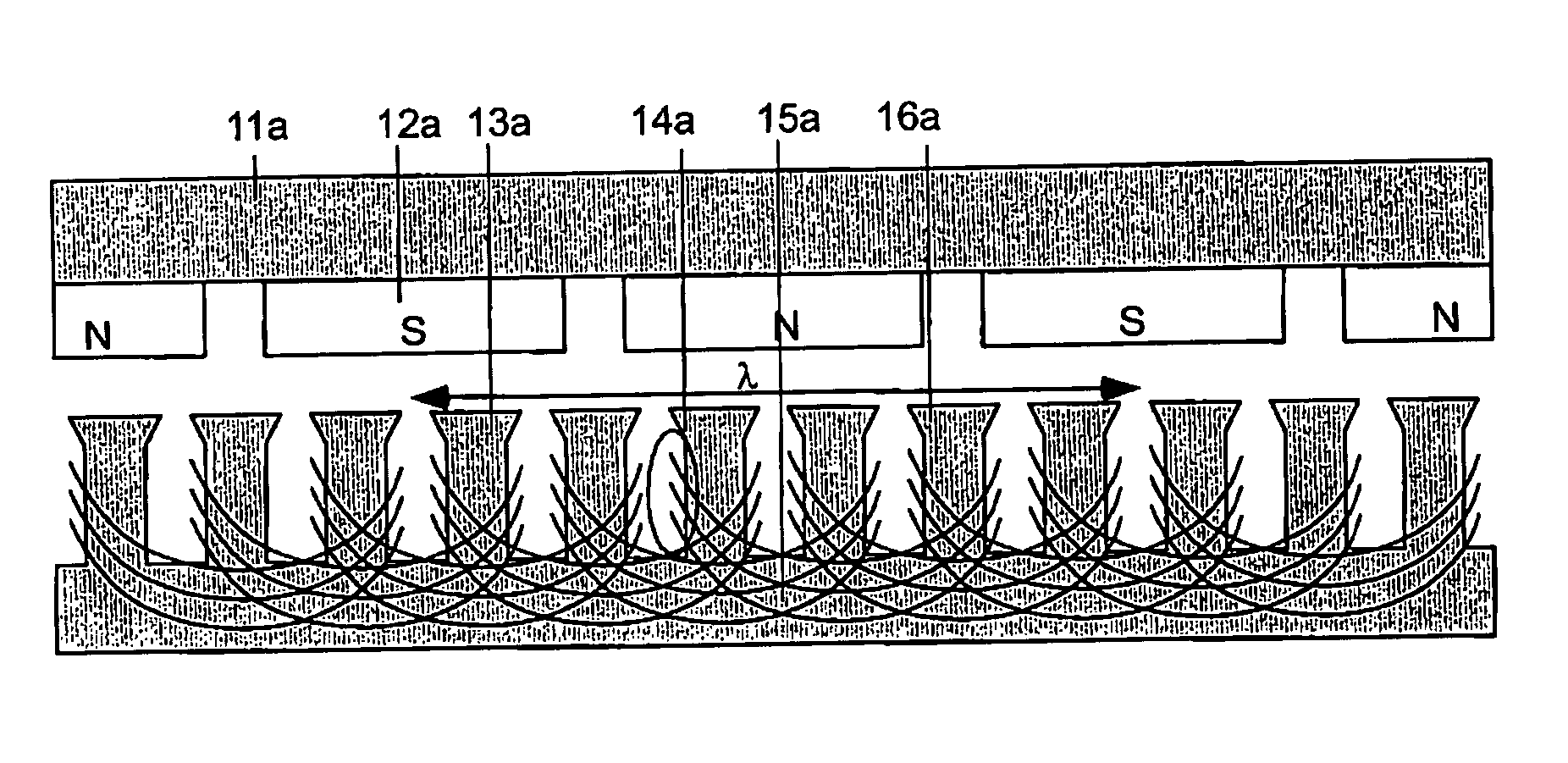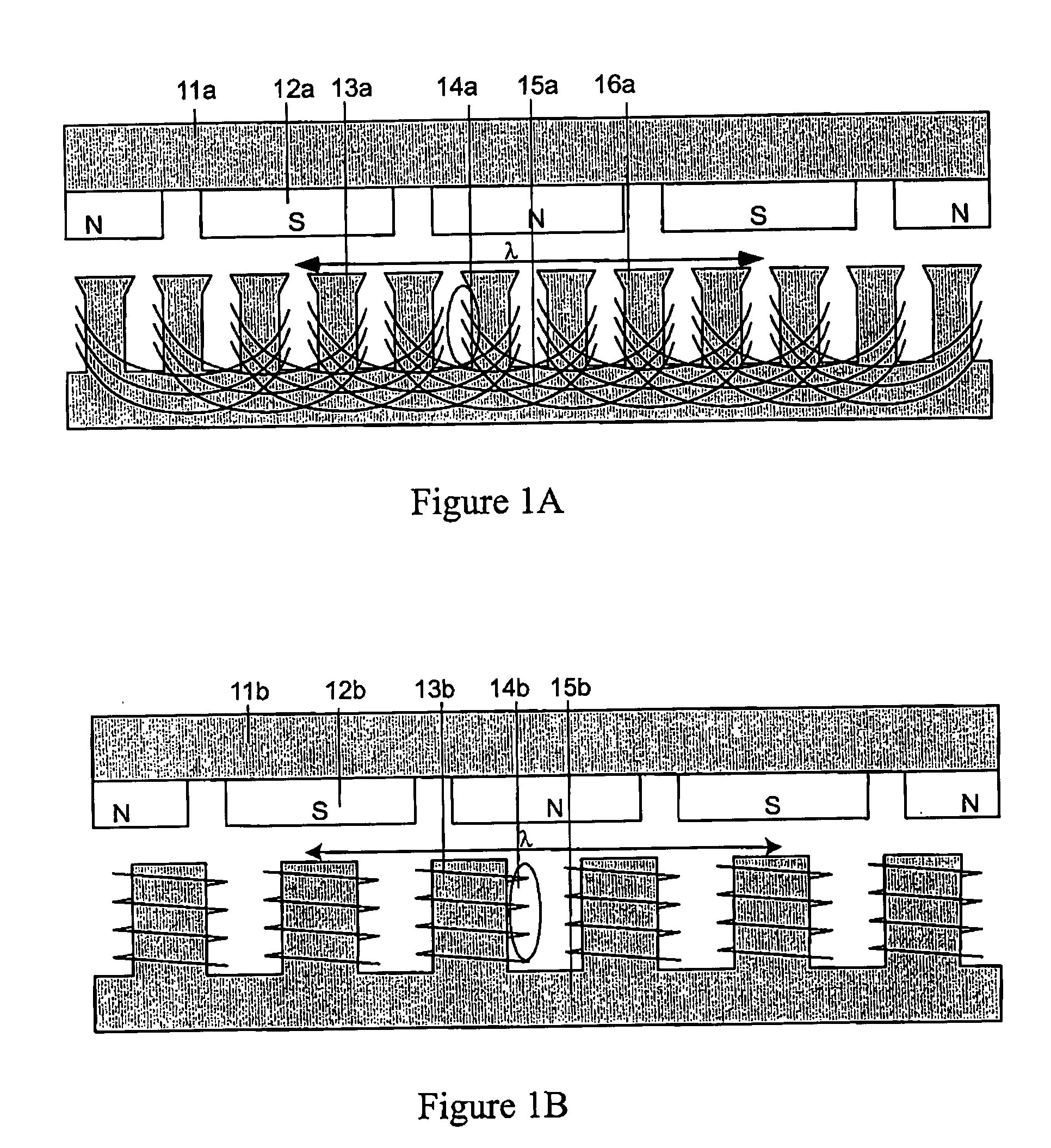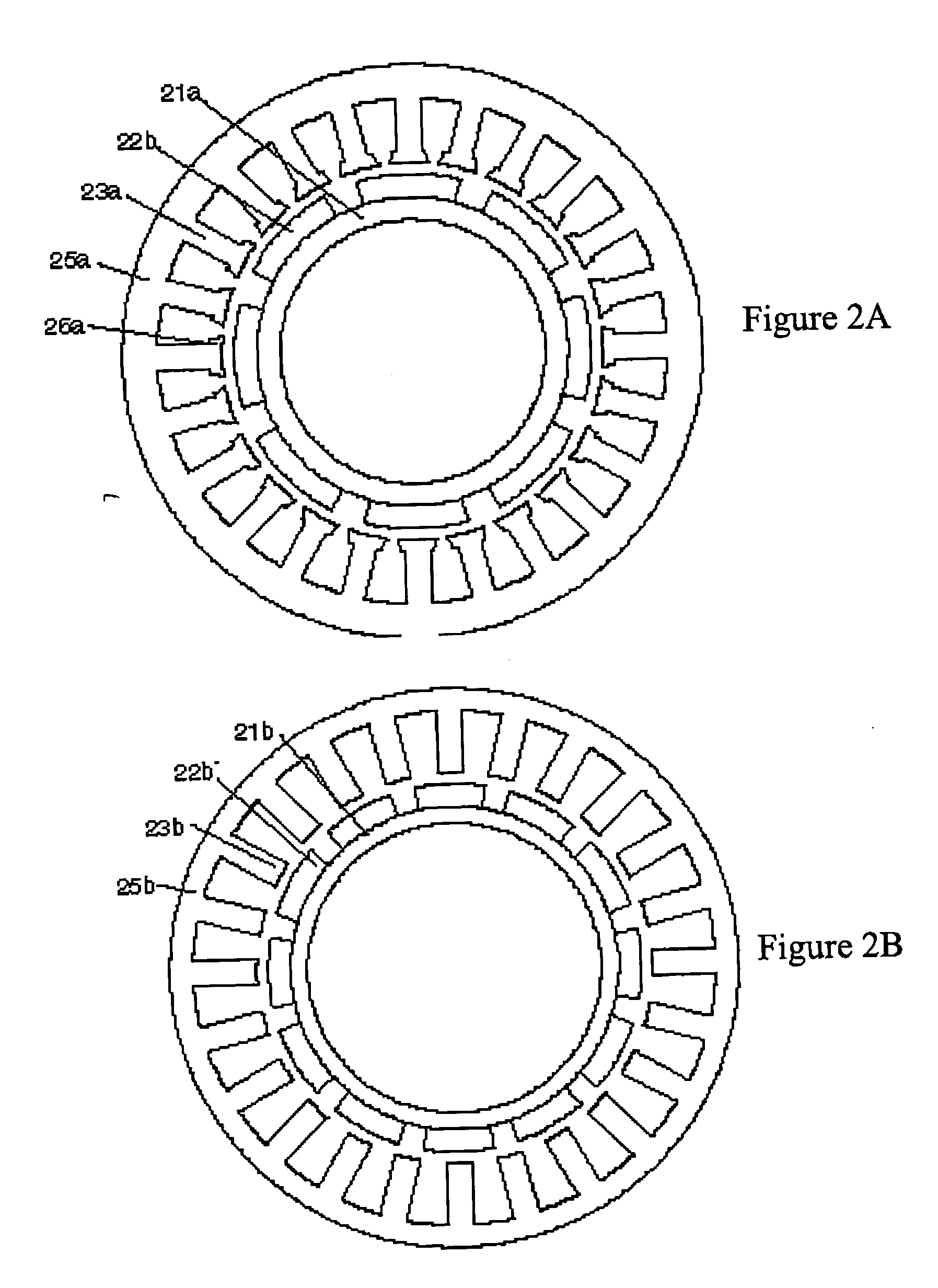Synchronous machine design and manufacturing
a synchronous machine and synchronous motor technology, applied in the direction of windings, propulsion systems, magnetic circuit shapes/forms/construction, etc., can solve the problems of inefficiency and high cost, inability to meet the needs of most variable speed applications, and degradation of other aspects of motor performance and/or manufacturing cost, so as to reduce cost, increase performance, and eliminate cogging forces
- Summary
- Abstract
- Description
- Claims
- Application Information
AI Technical Summary
Benefits of technology
Problems solved by technology
Method used
Image
Examples
Embodiment Construction
[0041] Theory of Operation
[0042] Applicant's invention employs combinations of design techniques to achieve high performance and reduced manufacturing cost for a variety of types of synchronous machines. The initial discussion and figures refer to a linear machine with permanent magnet field, but the teachings are applicable to a wide class of rotary and linear machines with either permanent magnet or electromagnet fields and including machines using superconductors.
[0043]FIG. 1a is an example of a prior art LSM and FIG. 1b is an example of an LSM according to one practice of the invention. In this Figure the field structures are composed of back iron, 11a and 11b, and permanent magnets, 12a and 12b. The field (or “field structure”) and armature are both 2λ long, where wavelength λ is defined in the Fig. The field has three full-poles and two half-poles with half-poles used at the ends of the field in order to minimize end effects. In an actual motor the field is usually longer th...
PUM
 Login to View More
Login to View More Abstract
Description
Claims
Application Information
 Login to View More
Login to View More - R&D
- Intellectual Property
- Life Sciences
- Materials
- Tech Scout
- Unparalleled Data Quality
- Higher Quality Content
- 60% Fewer Hallucinations
Browse by: Latest US Patents, China's latest patents, Technical Efficacy Thesaurus, Application Domain, Technology Topic, Popular Technical Reports.
© 2025 PatSnap. All rights reserved.Legal|Privacy policy|Modern Slavery Act Transparency Statement|Sitemap|About US| Contact US: help@patsnap.com



